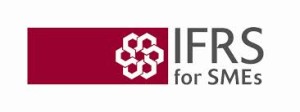NIIF para pequeñas y medianas empresas (IFRS for SMEs)
agosto 27, 2014 a las 9:28 pm
 Is a self-contained Standard of 230 pages, designed to meet the needs and capabilities of small and medium-sized entities (SMEs), which are estimated to account for over 95 per cent of all companies around the world.
Is a self-contained Standard of 230 pages, designed to meet the needs and capabilities of small and medium-sized entities (SMEs), which are estimated to account for over 95 per cent of all companies around the world.
Compared with full IFRSs (and many national GAAPs), the IFRS for SMEs is less complex in a number of ways; to read more about how complexity was reduced.
Topics not relevant for SMEs are omitted. Examples: earnings per share, interim financial reporting and segment reporting.
Where full IFRSs allow accounting policy choices, the IFRS for SMEs allows only the easier option. Examples: no option to revalue property, equipment, or intangibles; and requiring a cost model for investment property unless fair value is readily available without undue cost or effort.
Many principles for recognising and measuring assets, liabilities, income and expenses in full IFRSs are simplified. For example, amortise goodwill; expense all borrowing and R&D costs; cost model for associates and jointly-controlled entities; and no available-for-sale or held-to-maturity classes of financial assets.
Significantly fewer disclosures are required (roughly a 90 per cent reduction).
The Standard has been written in clear, easily translatable language.
To further reduce the burden for SMEs, revisions to the IFRS are expected to be limited to once every three years.
The Standard is available for any jurisdiction to adopt, whether or not it has adopted full IFRSs. Each jurisdiction must determine which entities should use the Standard. The IASB’s only restriction is that listed companies and financial institutions should not use it.
